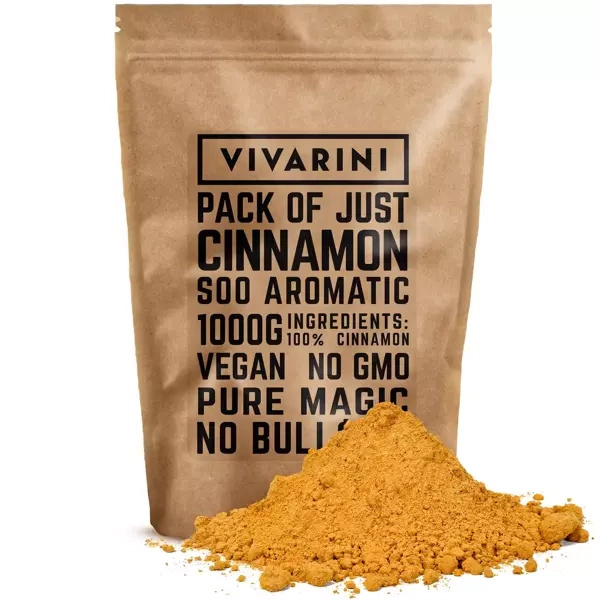Cinnamon – a spice of remarkable properties. what is cinnamon good for and where to use it?
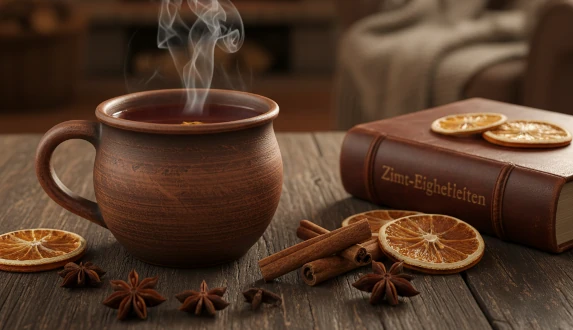
Cinnamon is one of those spices that captivate with an intense aroma and a warm, gently sweet flavour. It evokes the autumn‑winter season, warming infusions and homemade baking – but its use goes far beyond that. For thousands of years it has been a symbol of luxury, health and exotic origin. Today we happily add cinnamon to tea, coffee, yerba mate or desserts – not only for the flavour, but also for its numerous health properties of cinnamon.
In this article we will explain what is cinnamon, where it comes from and what its properties are. You’ll also learn about the different types of cinnamon and how to use this spice in the kitchen. And if you’re wondering is cinnamon healthy and what is cinnamon good for – you’ll find the answers here too.
Summary:
- What is cinnamon and where does it come from?
- Cinnamon properties and cinnamon nutritional value
- Cinnamon uses in cooking
- Cinnamon tea recipe and benefits
- Cinnamon in your everyday diet
- Discover the magic of cinnamon in your kitchen!
What is cinnamon and where does it come from?
Cinnamon is a natural spice obtained from the dried bark of trees of the Cinnamomum genus, which grow mainly in South‑East Asia. Once harvested, the bark is dried, rolled into characteristic sticks and turns a gentle brown colour – and that’s how the well‑known cinnamon sticks appear on shop shelves. When ground, it becomes an aromatic, golden‑brown powder, perfect for baking, drinks and warming spice blends.
This cinnamon spice is valued for its intense fragrance and rich taste – sweet, warm, with a slightly peppery finish. No wonder that cinnamon is widely used both in sweet and savoury dishes. From traditional apple cakes to oriental curries and flavourful infusions – the range of cinnamon uses is truly wide.
💡 Did you know? The word “cinnamon” comes from the Greek kinnámōmon, meaning “sweet bark”. Since ancient times it was believed to hold magical properties – to purify, protect and bring prosperity.
A short history of cinnamon
The history of cinnamon dates back thousands of years. In ancient Egypt it was used for embalming and in the production of perfumes and oils. Chinese records more than 4 000 years old describe it as one of the basic natural medicines. In India, cinnamon held an important place in Ayurveda – the traditional medical system – where it was thought to have warming and digestive effects.
In medieval Europe, cinnamon was considered a symbol of luxury – so expensive that owning it proved high social status. It was brought from distant Ceylon (today’s Sri Lanka) and South‑East Asia by Arab merchants who maintained a monopoly for centuries. Later explorations opened access to the spice, making it one of the key ingredients in kitchens worldwide.
Types of cinnamon – Ceylon and Cassia
There are many species of cinnamon trees around the world, but in trade we usually distinguish two main types of cinnamon: Ceylon cinnamon (Cinnamomum verum) and Cassia cinnamon (Cinnamomum cassia). Though often grouped under one name, they differ in appearance, chemical composition and flavour.
- ✔️ Ceylon cinnamon – often called “true cinnamon”. It originates from Sri Lanka and is characterised by a delicate, gently sweet taste and light‑brown colour. Its bark is thin and brittle. Ceylon contains much less coumarin – a natural compound which, in excess, may burden the liver.
- ✔️ Cassia cinnamon – mainly from China and Indonesia. It has a stronger, spicier flavour and a darker colour. Its sticks are harder, and the coumarin content is higher than in the Ceylon variety.
The differences are noticeable, especially in infusions and desserts. If you enjoy gentler notes, choose Ceylon cinnamon; if you prefer a stronger, spicier kick – Cassia works perfectly in winter spice mixes or as cinnamon for tea.
It’s also worth noting that Ceylon cinnamon, due to its subtler taste, careful harvesting process and lower coumarin content, is more expensive and often sold as a premium product – an excellent choice for those who value top‑quality spices and natural origin.
📌 In summary:
- Cinnamon is the dried bark of trees from the Cinnamomum genus.
- Ceylon cinnamon is milder and known as the “true cinnamon”.
- Cassia cinnamon has a more intense taste and darker colour.
- Both varieties are rich in valuable bioactive compounds – but should be used in moderation and chosen of high quality.
In the next part we shall look closer at the health properties of cinnamon that make it a spice supporting the body. You’ll also find out how to use cinnamon to enjoy its full power – both in the kitchen and in a cup of fragrant tea with cinnamon.

Cinnamon properties and nutritional value
It is not only an aromatic spice with a distinctive warm flavour. Cinnamon is a natural source of many valuable nutrients that may support the proper functioning of the body. It’s no wonder that we so readily include it in our daily diet – adding it to meals and flavourful infusions. In the following paragraphs we’ll take a closer look at what’s hidden in a small portion of this oriental spice and why it’s worth always keeping some in your kitchen.
Nutritional components of cinnamon
Even though we usually add only a pinch, cinnamon hides an impressive set of micro‑elements and bioactive substances. Each portion of this spice contains, among others:
- ✔️ Fibre – helps support healthy digestion and may ease discomfort after heavy meals.
- ✔️ Calcium, iron and manganese – minerals involved in numerous metabolic processes. Manganese also supports the function of antioxidant enzymes.
- ✔️ Antioxidants – compounds that neutralise free radicals, which in excess may damage cells. Studies confirm that cinnamon is among the spices with a high antioxidant capacity.
- ✔️ Natural essential oils – rich in cinnamaldehyde, eugenol and cinnamic acid, responsible for its distinctive aroma and biological activity.
Thanks to these compounds, cinnamon spice offers not only culinary delight but also potential benefits for well‑being – no wonder it has been appreciated by both chefs and herbalists for centuries.
Health properties of cinnamon
The properties of cinnamon have been valued for thousands of years – both in traditional Eastern medicine and modern research on natural ingredients. Although experts continue to investigate the effects of cinnamon on the body, many studies suggest that regular, moderate consumption (such as using it in drinks or foods) may help maintain balance in a daily diet.
The most frequently mentioned health properties of cinnamon include:
- Anti‑inflammatory and antibacterial effects of cinnamon – its essential oil contains cinnamaldehyde and eugenol, which, according to research, may limit the growth of certain microorganisms and support the immune system’s natural defences.
- Support for digestion and metabolism – this spice has long been prized as a digestive aid that reduces the feeling of heaviness after a meal and fits well into the diet of those seeking lightness after eating.
- Help in balancing blood sugar levels – some studies indicate that compounds in cinnamon may support proper insulin sensitivity and contribute to stable glucose levels. That’s why it’s often appreciated by people aiming for balanced carbohydrate metabolism.
- Support for immunity – during autumn and winter, adding cinnamon to herbal infusions, for example cinnamon for tea or yerba mate, may help the body cope with chillier weather thanks to its warming aroma and antioxidant content.
As a result, the effects of cinnamon cannot be narrowed down to a single aspect – it is a spice that supports various processes in the body, while making foods and drinks deeper in flavour and fragrance.
💬 Scientific sources:
- P. V. Rao, S. H. Gan, Cinnamon: A Multifaceted Medicinal Plant, Evidence‑Based Complementary and Alternative Medicine, 2014.
- N. Błaszczyk et al., The Potential Role of Cinnamon in Human Health, Forests, 2021.
Is cinnamon healthy?
Many people wonder: is cinnamon healthy? The answer is simple – yes, as long as we use it in moderation. Cinnamon, especially the Ceylon variety, can be a valuable part of a balanced diet. Regular, small amounts may improve daily well‑being, add aroma to meals and introduce a touch of exotic flavour to everyday life.
However, bear in mind that the Cassia type contains more coumarin – a natural compound which in large quantities is not recommended for long‑term, heavy consumption. That’s why it’s best to use cinnamon wisely and choose good‑quality products from trusted sources – such as those available in our shop.
📌 Key takeaways on cinnamon:
- Cinnamon is a spice rich in fibre, minerals and antioxidants.
- It may aid digestion and contribute to better glucose tolerance.
- It has aromatic, warming and refreshing effects, making it perfect for colder seasons.
- Opt for the Ceylon type and use cinnamon in small quantities – that way its role in the diet is both healthy and pleasant.
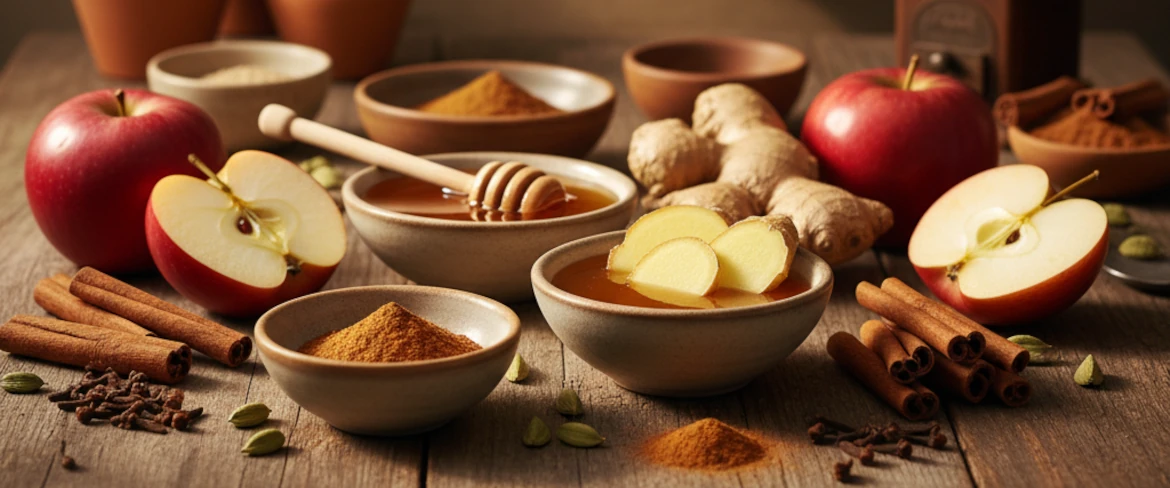
Cinnamon uses in cooking
Cinnamon is an exceptionally versatile spice. Its distinctive, warm and slightly spicy aroma can completely transform the character of dishes – from breakfast porridge to oriental meat meals. Although most people associate it with desserts and drinks, its culinary potential is much broader. It pairs wonderfully with both sweet fruitiness and sharper, savoury flavours. In this part of the article, we will show you how to use cinnamon in everyday cooking and drinks.
Cinnamon in drinks
It’s hard to find another spice that works so well in beverages as cinnamon. Just a pinch added to a cup of tea, coffee or yerba mate gives a unique warming character. It’s an ideal way to bring the scent of a cosy autumn kitchen home within minutes, no matter the weather outside.
If you’re dreaming of cinnamon for tea, simply add half a stick or a pinch of ground cinnamon to your hot brew. Cinnamon blends beautifully with black and green tea as well as fruit mixes. Such a drink not only warms you up but also fills the home with a pleasant spicy aroma. For more inspiration, see our blog post “Autumn teas – warming brews for chilly days”, where you’ll find ideas for aromatic compositions based on Mary Rose teas.
The Mary Rose brand also offers ready‑made, fragrant blends with a spicy, autumn‑winter and festive character. Fans of classic cinnamon teas will find something special here! We recommend for example Winter Spice, Gingerbread, Warming Spices, and Chai Tea. They all tempt with the intense smell of spices and make a perfect base for a relaxing evening cup of tea.
If you prefer the exotic energy of yerba mate, be sure to try it with a cinnamon twist! At MateMundo.pl you will find plenty of ready mixes delighting in aroma and flavour:
- Verde Mate Winter Edition – a combination of yerba mate, apple, cinnamon and clove oil that perfectly warms you up in winter.
- Verde Mate Let’s Get Warm – with pear, ginger, cardamom and cloves – a naturally spicy energy booster.
- Verde Mate Pumpkin Spice – a toasted mate with pumpkin, cinnamon and ginger, inspired by the famous pumpkin spice latte.
- Yaguar Winter Prune – yerba mate with apple, cinnamon and lemongrass – full of delicate sweetness and fragrance.
- Soul Mate Frosty Season – an organic blend enriched with cinnamon, guayusa and citrus oils.
- Guarani Let it Snow – a classic winter mix with ginger, apple and cinnamon.
Let’s not forget coffee and other beverages either! A pinch of cinnamon added to a cappuccino foam, hot chocolate or cocoa enhances the flavour and adds a pleasant warming touch to every sip.
Cinnamon in desserts and sweet treats
When we think of its aroma, we immediately picture Christmas bakes, apple pies and gingerbread. Yet cinnamon’s usefulness in desserts is much broader! It pairs perfectly with fruit – especially apples, pears and bananas – as well as with chocolate, nuts and oats.
In morning porridge, pancakes or toast spread with cinnamon‑flavoured peanut butter, a touch of spice adds energy to the start of your day and turns simple meals into something special. It’s also ideal for fruit mousses, yeast cakes or shortbread biscuits. If you like experimenting, try making your own “winter spice mix” – combine cinnamon with ginger, cardamom, cloves and a hint of nutmeg. This aromatic blend will give any bake or latte a festive feel!
Finally, cinnamon also works brilliantly as a decorative touch – sprinkle it over cakes, desserts or whipped cream on a cup of hot chocolate. Its colour and fragrance bring a cosy, homely character to any treat.
Cinnamon in savoury dishes
Few people realise that cinnamon also fits beautifully into savoury cooking. In many cuisines – Indian, Arabic and Moroccan – this spice is used in meat and vegetable dishes to add depth and a slightly oriental flavour. Add a touch to curry, stew, chilli con carne or Moroccan tagine – the result will surprise even experienced foodies!
In vegetable dishes it pairs especially well with pumpkin, sweet potatoes and carrots, enhancing their natural sweetness. It also compliments tomato‑based sauces – for pasta or one‑pot meals. Just a small pinch creates a pleasantly spicy aroma and freshens up flavours without the need for extra salt or sugar.
📌 In short:
- Cinnamon is a universal spice – great for tea, coffee and yerba mate, but also for baking and oriental dishes.
- In drinks it warms you up, in desserts it highlights fruit flavours, and in savoury recipes it adds depth and a spicy touch.
- You can combine it with ginger, cardamom and cloves to create your own spice blends.
- At MateMundo you’ll find a wide selection of cinnamon‑based products – from aromatic teas to energising yerba mates.
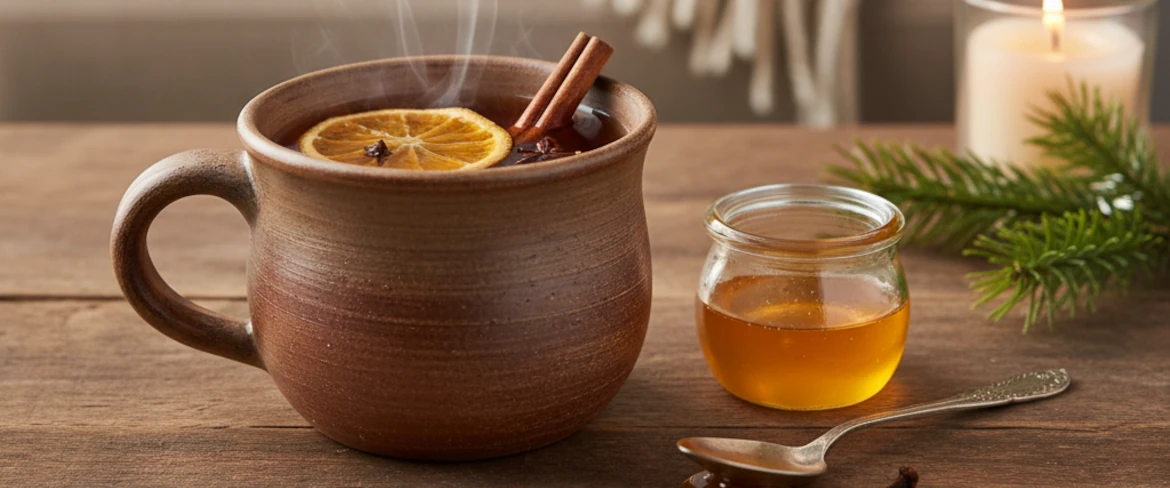
Cinnamon tea recipe and benefits
Cinnamon tea is a drink that evokes homely warmth, calm and relaxation after a long day. It has a deep, spicy aroma and a pleasantly warming flavour, which makes it perfect especially during autumn and winter. Cinnamon not only adds depth to the tea but also enriches it with a subtle sweetness and gentle spiciness. It’s the perfect drink for long evenings, a book, a film, or meetings with loved ones. And best of all – it’s truly easy to prepare!
This drink can be made either with black tea or rooibos as the base. You can also add honey, an orange slice or a few cloves – everything you need to create a truly aromatic, winter infusion. Here’s how you can prepare your favourite tea with cinnamon in the comfort of your home:
☕ Recipe for a fragrant cinnamon tea
What you’ll need:
- 1 teaspoon of black tea or rooibos
- ½ cinnamon stick or ½ teaspoon of ground cinnamon
- 250 ml hot water (approx. 90-95 °C)
- Honey or maple syrup to taste
- Optional: a slice of orange, a few cloves, a pinch of ginger
Preparation method:
- Place the tea and cinnamon in a cup or infuser.
- Pour in hot water and steep for 5-7 minutes with the cup covered.
- Add honey and your favourite extras after brewing.
- Ready! Serve the tea warm and enjoy.

Cinnamon tea has something magical about it – it warms and relaxes you, and it smells wonderful. You can prepare it in the classic version based on black tea, just as in the recipe above, or experiment with green or white tea. Another fantastic idea is to blend cinnamon with rooibos – a naturally caffeine‑free infusion that’s ideal for evening relaxation.
The combination of tea and cinnamon has many advantages – it not only warms the body but also provides gentle support during cold season. Drinking it regularly may help your immune system, elevate your mood and ease tiredness. It’s worth remembering that such infusions are a traditional home remedy for chilly days – they stimulate circulation lightly and add energy naturally.
Why is it worth reaching for cinnamon tea?
- ✔️ It warms the body on cold autumn and winter days.
- ✔️ It supports natural immune mechanisms.
- ✔️ Helps you relax and improves your mood.
- ✔️ Has a unique, spicy scent and mildly sweet flavour.
- ✔️ Thanks to its essential oils, it refreshes and stimulates the senses.
In the end, this cinnamon for tea isn’t just a delicious drink – it’s a small ritual that helps you slow down and savour the moment. Whether you add a slice of orange, a touch of honey or vanilla, it will always delight with its aroma and bring a bit of warmth to your day!
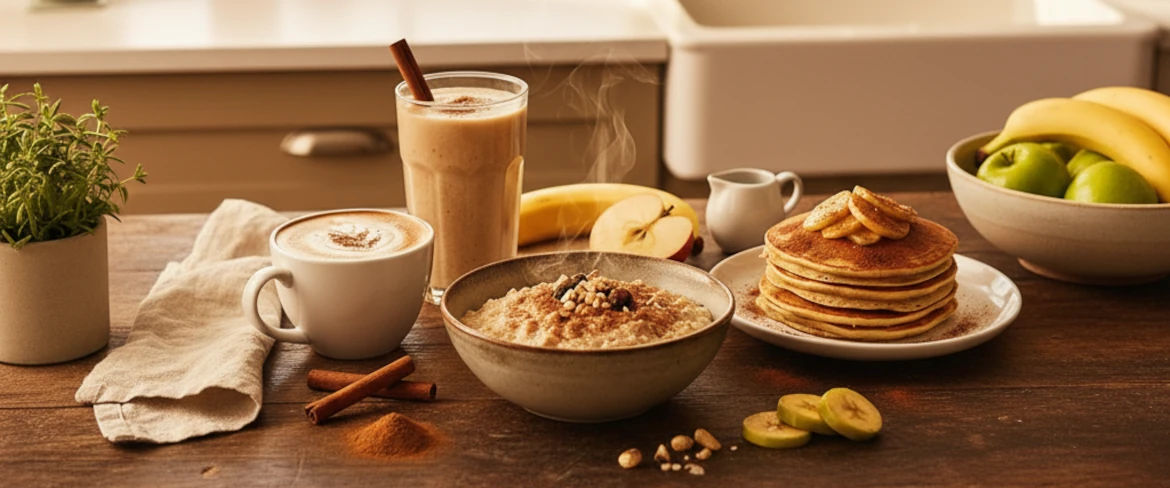
Cinnamon in your everyday diet
Although for many people cinnamon is primarily a spice for desserts and aromatic winter infusions, it’s worth remembering that its use is much broader. Adding a pinch of this spice to daily meals can liven up flavours, introduce a touch of the exotic and at the same time provide natural bioactive components that support the body. Whatever the time of day – morning porridge, afternoon coffee or an evening vegetable meal – cinnamon fits almost any culinary context perfectly.
How to introduce cinnamon into your daily menu?
Incorporating cinnamon into your diet is surprisingly easy. All it takes is a dash of creativity and a few proven ideas to enjoy its aroma and flavour every day.
- A morning with a touch of cinnamon: Add a pinch to porridge, granola, plain yoghurt or fruit smoothies. Cinnamon pairs especially well with apple, banana and pear for a tasty, aromatic blend.
- Cinnamon in coffee and cocoa: A small amount mixed with ground coffee or sprinkled over milk foam creates a barista‑style drink and a boost of energy to start the day.
- In main courses and salads: Cinnamon enhances the taste of stewed vegetables (especially pumpkin, sweet potato and carrot) and goes well with tomato sauces or oriental rice and grain dishes.
- In bakes and desserts: A classic. Cinnamon in apple pie, pancakes, puddings, rice pudding or biscuits adds a beautiful scent and cosy atmosphere to the whole home.
- In infusions based on tea and yerba mate: Add a pinch to a hot brew to strengthen its aroma and warming character. Try e.g. Verde Mate Winter Edition or Mary Rose Gingerbread tea – perfect for autumn and winter afternoons.
Why choose high‑quality ground cinnamon?
Not all cinnamon is the same. Differences in quality affect not only flavour but also its nutrient content. By choosing high‑quality ground cinnamon you ensure a product that is aromatic and safe for regular use.
To recap, Ceylon cinnamon (Cinnamomum verum) – often called “true cinnamon” – has a delicate, slightly sweet taste and balanced aroma. It contains much less coumarin, a natural compound which in excess can strain the liver. This makes it the best choice for everyday use – especially if you enjoy it regularly in coffee, tea or bakes.
Meanwhile, Cassia cinnamon (Cinnamomum cassia) is more common and has a stronger flavour – perfect for seasonal spice mixes and festive desserts. Both varieties are valuable, but Ceylon cinnamon is a top‑choice for those who prioritise quality and the full range of cinnamon properties.
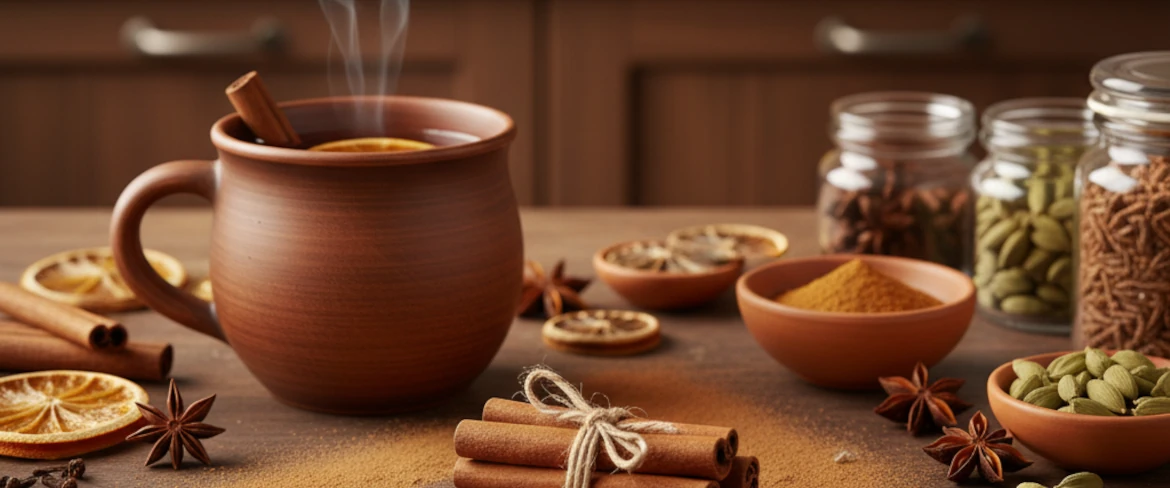
Discover the magic of cinnamon in your kitchen!
Cinnamon is a spice where flavour, aroma and nature’s power meet. It combines culinary and health benefits of cinnamon and can transform even the simplest meal or drink. Just a little is enough to give any dish a unique character. Its versatility makes it worth having always at hand – whether in the spice drawer or next to the coffee machine.
If living a healthier lifestyle teaches us anything, it’s that sometimes the simplest habits matter most – like using cinnamon regularly. A pinch added to morning porridge, afternoon coffee or a winter brew fills your home with a beautiful fragrance while lifting your spirits and supporting well‑being. Reach for it not only in winter but all year round. Experiment, mix with your favourite spices and discover your own culinary inspirations.
Let cinnamon become your daily ally in the kitchen – a touch that combines flavour pleasure with a bit of self‑care. Because sometimes it’s these small rituals that make everyday life more beautiful, fragrant and full of warmth.
Let yourself be carried away by the aroma of cinnamon – may every cup and every dish bring you a moment of warmth and pleasure in your day!
❓ FAQ – frequently asked questions about cinnamon
1. How should cinnamon be stored?
2. Does cinnamon help with colds?
3. How much cinnamon can you consume per day?
Sources of information:
- Wikipedia: Cinnamon.
- P. V. Rao, S. H. Gan, Cinnamon: A Multifaceted Medicinal Plant, Evidence-Based Complementary and Alternative Medicine, 2014.
- N. Błaszczyk et al., The Potential Role of Cinnamon in Human Health, Forests, 2021.
- R. Morgan Griffin, K. Rope, Cinnamon Health Benefits and Side Effects, www.webmd.com, 2025.


